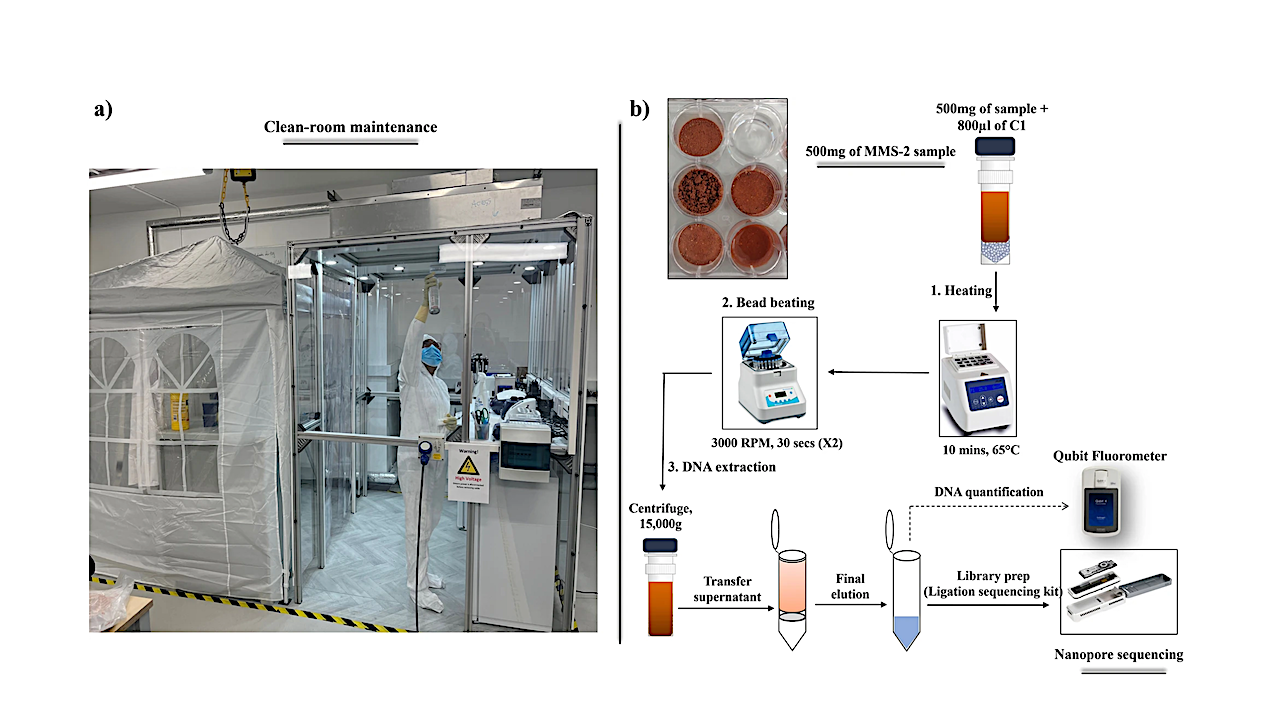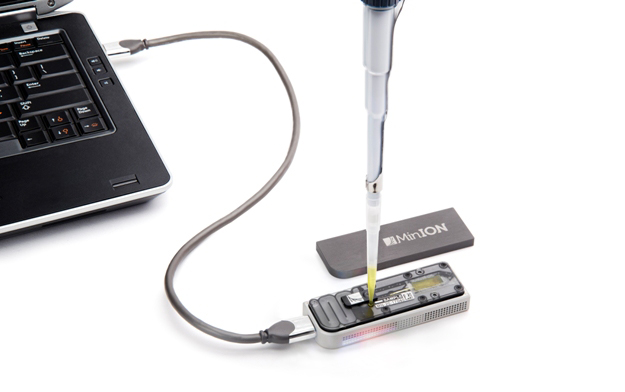
A schematic representation of the end-to-end procedure. (a) ISO-5 clean room maintenance: Before any test setup, the working table, wall panels and equipment were sprayed with 70% isopropyl alcohol and Chemgene HLD4L. The area is thoroughly wiped using sterile sterile wipes. (b) Graphical representation of DNA extraction and analysis procedure from 500 mg MMS-2 sample. The extracted DNA can be fed directly to the nanopore sequencing instrument or, alternatively, used for DNA mass quantification if the concentration is above 10 pg/µl. – University of Aberdeen
Space scientists have developed a new process to test for life on Mars and Earth, using cutting-edge technology to sequence DNA using a very small sample of DNA mass.
Researchers from the University of Aberdeen’s Department of Planetary Sciences used the MinION DNA sequencer, developed by Oxford Nanopore Technologies, to identify microbes present in small amounts of terrestrial soil and study how they respond to environmental conditions.
As a result, they designed a process that can detect and characterize soil DNA with a mass of 2 picograms of DNA (the genome of a hummingbird’s single cell contains one picogram of DNA).
The discovery has important implications for studying whether rock and soil samples taken from Martian and terrestrial landscapes contain traces of the DNA necessary to support microbial life.
PhD student Jyoti Basapathy Raghavendra prepared the research under the supervision of professors Javier Martín-Torres and Maria-Paz Sorzano. The study is published in the journal Scientific Reports.
Professor Martin-Torres said: „There is a slim chance of microbial life on Mars today, but to find it we need to work at sample scale, which is where the size and power of the hardware used in space probes becomes a key factor.

“Using the MinION, which offers portability with state-of-the-art technology, we conducted the tests in our clean lab, which ensures that the test is not affected by background contamination.
„In doing so, we successfully identified MinION’s extremely low DNA detection limit, demonstrating its value as a powerful tool for searching for microbial life in samples from planetary environments.
„This creates exciting possibilities for Mars research, as MinION’s size and power make it an ideal candidate for future exploration missions using the process we’ve developed.
„Furthermore, it could be used in inhospitable Earth environments such as deserts or polar regions, as well as in medicine, pharmacy and chemistry where biological contamination is undesirable.”
Clive Brown, Oxford Nanopore’s Chief Technology Officer, said: “Space science provides an important terrain to push the capabilities of the Oxford Nanopore platform. This work generates evidence for very few inputs, which is an important step. Sequencing technology could be adapted for more extreme applications like Mars — and beyond — providing the tools needed to study extraterrestrial samples. We aim to further develop the technology for when the Mars sample return mission returns in 2033.
DNA sequencing at the picogram scale to explore life on Mars and EarthNature (Open Access)
Astronomy

„Oddany rozwiązywacz problemów. Przyjazny hipsterom praktykant bekonu. Miłośnik kawy. Nieuleczalny introwertyk. Student.
